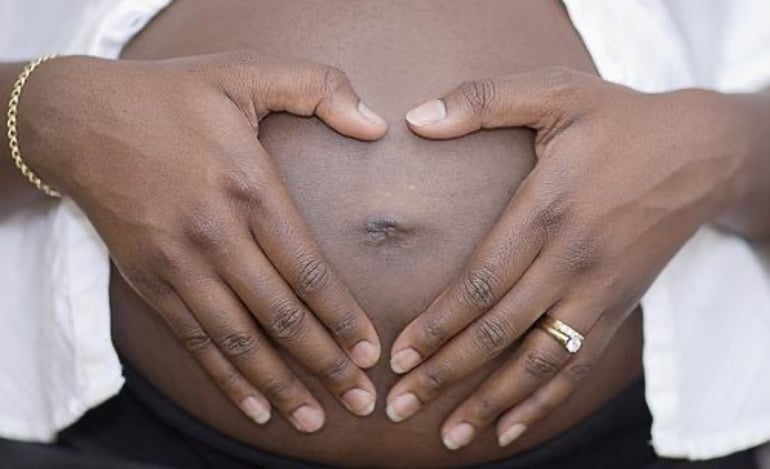Twin Ultrasound Timeline: Key Scans & Measurements for Multiples
A positive pregnancy test is exciting, but seeing two tiny flickers on the screen can turn that excitement into a thousand new questions. Twin (and higher‑order) pregnancies come with double the joy and twice the monitoring. Ultrasound is the obstetrician’s stethoscope for multiples, mapping chorionicity, spotting complications early, and guiding the safest delivery window. Below you’ll find a week‑by‑week twin pregnancy ultrasound roadmap—rooted in today’s ACOG, SMFM, and ISUOG guidelines—to help you follow every milestone with confidence.

Why Twins Need a Different Ultrasound Playbook
Compared with singletons, twins face higher risks of TTTS, growth discordance, preterm birth, and placental complications. Targeted, more frequent imaging gives clinicians the lead time to intervene—sometimes with life‑saving procedures such as laser ablation for TTTS. Professional bodies therefore set tighter scan schedules based on chorionicity (how many placentas) and amnionicity (how many sacs). Early determination of these factors—ideally by 13 weeks—dictates everything that follows.
First‑Trimester Must‑Dos (6‑13 Weeks)
1. Viability & Dating Scan (6–8 Weeks)
- Purpose: Confirm heartbeats, establish gestational age using the larger twin’s crown‑rump length, and rule out ectopic or vanishing‑twin syndrome.:contentReference
- Key Measurements: CRL for each fetus, yolk sac count, and initial evaluation of chorionicity via “lambda” (di‑di) or “T‑sign” (mono‑di).
2. Chorionicity & Nuchal Translucency (11–13 Weeks +6)
- Purpose: Definitively label chorionicity/amnionicity; perform combined aneuploidy screening (NT plus serum markers); measure early cervical length.
- Why It Matters: Chorionicity decides surveillance frequency—dichorionic‑diamniotic (DC/DA) twins are lower‑risk than monochorionic‑diamniotic (MC/DA) or monoamniotic twins.
Second‑Trimester Game Plan
3. Early Anatomy & TTTS Surveillance (15–18 Weeks)
For MC/DA twins, guidelines call for every‑other‑week ultrasounds beginning at 16 weeks to catch the earliest signs of TTTS. DC/DA twins can usually wait until the standard anatomy scan unless other concerns arise.
4. Detailed Anatomy Scan (18–22 Weeks)
- All multiples receive a comprehensive organ check, placental mapping, Doppler flow studies, and confirmation of cervical length. In MC/DA twins, this exam may coincide with the third TTTS screening of the month.
- Placental Insight: Location and cord insertion (marginal or velamentous) influence future growth surveillance.
Growth & Well‑Being: Third Trimester Into Delivery
| Gestational Age | Dichorionic‑Diamniotic (DC/DA) | Monochorionic‑Diamniotic (MC/DA) | Monoamniotic (MC/MA) |
|---|---|---|---|
| 16 w | — | Begin bi‑weekly TTTS screen | Begin weekly growth & Dopplers |
| 20 w | Anatomy + growth | Anatomy + TTTS screen | Continue weekly |
| 24 w | Growth every 4 wks | Growth/TTTS every 2 wks | In‑hospital daily monitoring |
| 28–32 w | Doppler & growth q4w | Doppler & growth q2w | Daily NST & BPP |
| 34 w → delivery | Weekly BPP or NST | Twice‑weekly BPP or NST | Plan elective Cesarean ~32‑34 w |
Adapted from ISUOG (2025) and SMFM Coding Guidance updates.:contentReference[oaicite:3]{index=3}
Key Measurements in Late Pregnancy
- Estimated Fetal Weight (EFW) & Discordance % (discordance ≥ 20 % triggers closer surveillance).
- Amniotic Fluid Index/Deepest Vertical Pocket—critical for TTTS staging.
- Umbilical Artery & Middle Cerebral Artery Dopplers—assess placental insufficiency.
- Cervical Length—< 25 mm before 24 weeks predicts spontaneous preterm birth.
Higher‑Order Multiples (Triplets & More)
Triplets demand an even tighter schedule: growth and Doppler scans every 2 weeks from 18 weeks, with weekly biophysical profiles after 28 weeks. Many practices admit monoamniotic or high‑risk triplet sets for continuous inpatient monitoring by 26‑28 weeks to reduce cord‑entanglement risks.

Red Flags That Trigger Extra Scans
- EFW discordance > 20 %
- Sudden change in amniotic fluid volume between twins
- Doppler abnormalities (absent or reversed diastolic flow)
- Maternal complications: preeclampsia, gestational diabetes, cholestasis
- Cervical shortening or funneling on transvaginal scan
If any of these appear, your MFM specialist may add weekly (or even twice‑weekly) scans and antenatal testing until delivery.
Real‑Life Snapshot: Maria’s Mono‑Di Journey
“Bi‑weekly scans saved my daughters,” says Maria, a 29‑year‑old first‑time mom diagnosed with MC/DA twins. At her routine 20‑week anatomy scan, fluid imbalance hinted at Stage I TTTS. Because her scans were scheduled every two weeks, her care team caught Stage II four days later and treated with laser ablation at 21 weeks. Both girls were born healthy at 34 weeks.
FAQs
Are extra ultrasounds safe for my babies?
Yes. Diagnostic ultrasound uses non‑ionizing sound waves and, when performed by trained professionals, poses no known risk. ACOG states ultrasound should be used judiciously but is the imaging modality of choice in pregnancy.
Why does chorionicity change the schedule?
Monochorionic twins share a placenta, which raises the odds of TTTS and selective growth restriction—conditions that can progress within days. Frequent imaging spots early signs before irreversible damage occurs.
What happens if growth discordance exceeds 25 %?
Your provider may order weekly Dopplers, corticosteroids for lung maturity, or plan an earlier delivery, balancing prematurity risks against worsening placental insufficiency.
Do I need specialized equipment for a twin scan?
No—standard obstetric ultrasound machines suffice, but an experienced sonographer or MFM specialist is essential for accurate TTTS staging and Doppler assessments.
Key Takeaways
- Early chorionicity confirmation (by 13 weeks) sets the ultrasound cadence for twin pregnancies.
- DC/DA twins: anatomy at 18‑22 weeks, growth every 4 weeks from 24 weeks.
- MC/DA twins: bi‑weekly scans from 16 weeks to delivery for TTTS surveillance.
- Higher‑order multiples: growth every 2 weeks from 18 weeks; inpatient monitoring often begins by the third trimester.
- Watch for red flags—discordant growth, fluid shifts, Doppler changes—and expect intensified surveillance if they appear.
Planning your own twin ultrasound journey? Share your questions or milestones in the comments below, and tag #BabyBumpZone on Instagram so our community can celebrate every heartbeat with you!



